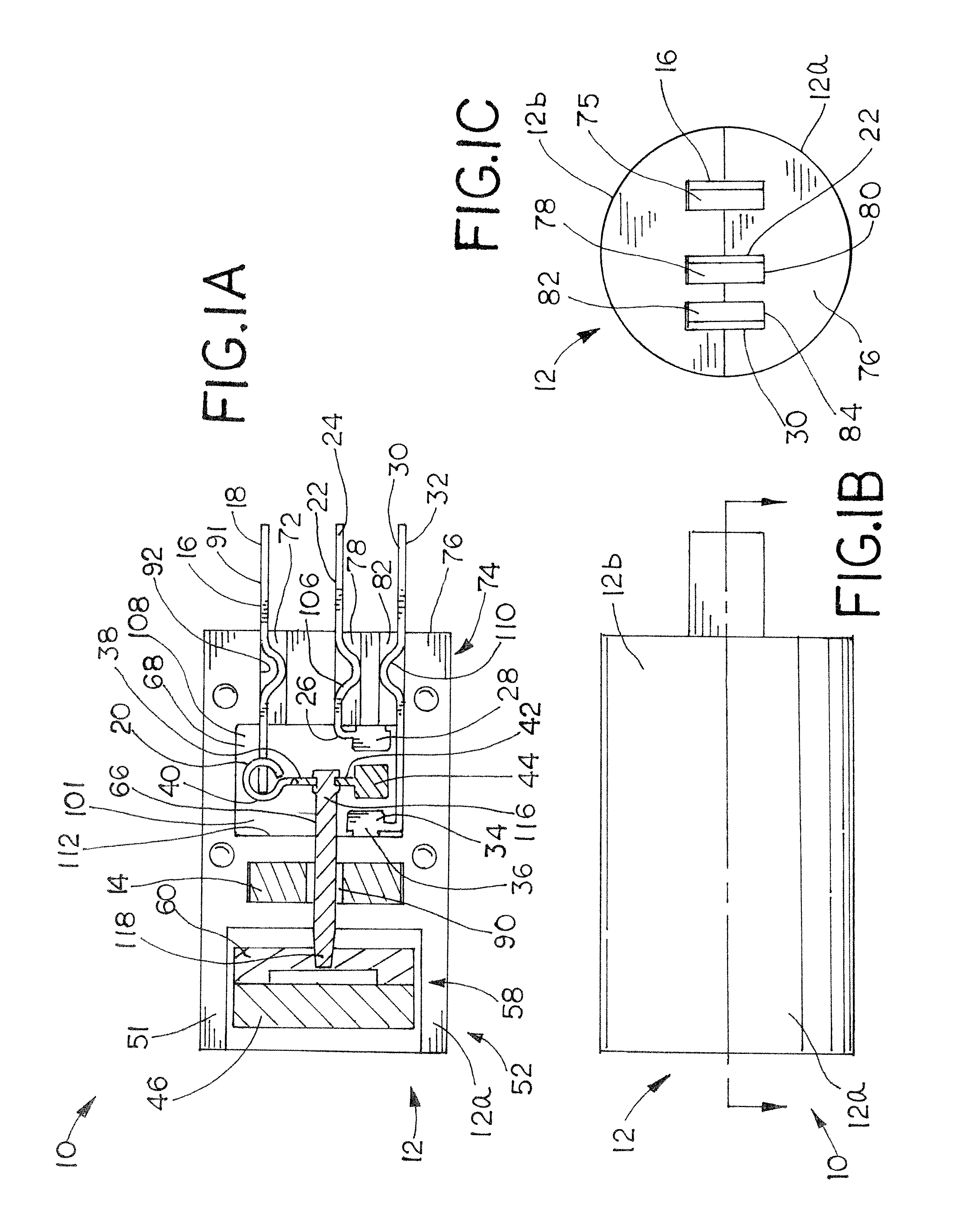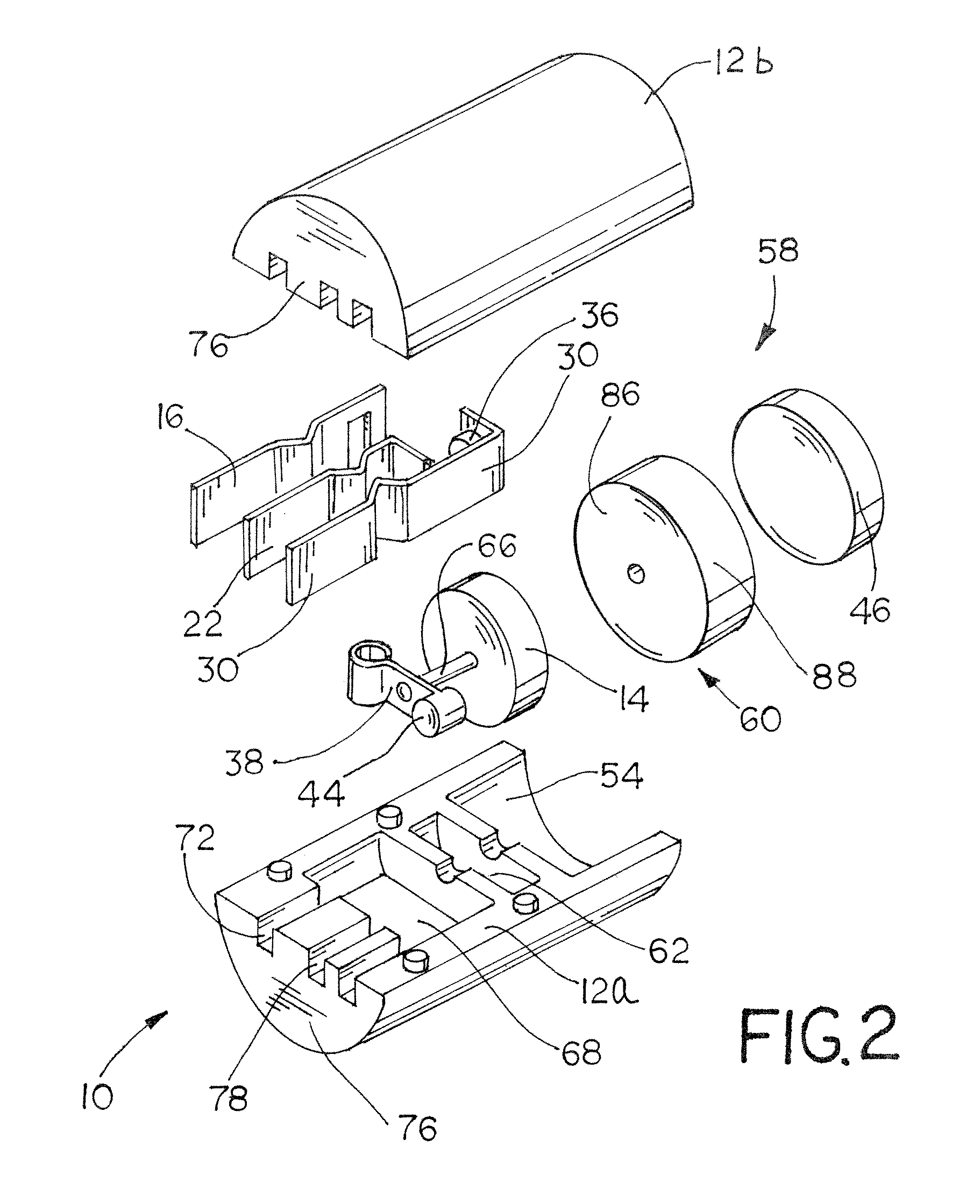Magnetically-triggered proximity switch
a magnetically triggered, proximity switch technology, applied in the direction of magnetic movement switch, electric switch, electrical apparatus, etc., can solve the problems of limiting the application in which the sensor can be used, the inability to use typical sensors in applications, and the inability to reduce the size of the proximity switch
- Summary
- Abstract
- Description
- Claims
- Application Information
AI Technical Summary
Benefits of technology
Problems solved by technology
Method used
Image
Examples
Embodiment Construction
[0033]As illustrated in FIG. 1A, a magnetically-triggered proximity switch 10 includes a switch body 12 and a first magnet 14 non-movably secured within the switch body 12. The proximity switch 10 also includes a common arm 16 having a first end 18 and a second end 20, and the second end 20 of the common arm 16 is disposed within the switch body 12. The proximity switch 10 further includes a primary arm 22 having a first end 24 and a second end 26. The second end 26 is disposed within the switch body 12, and the second end 26 includes a primary contact 28. In addition, the proximity switch includes a secondary arm 30 having a first end 32 and a second end 34. The second end 34 is disposed within the switch body 12, and the second end 34 includes a secondary contact 36. A cross arm 38 is disposed within the switch body 12, and the cross arm 38 has a first end 40 and a second end 42. The first end 40 is coupled to the common arm 16 and the second end 42 includes a common contact 44. A...
PUM
 Login to View More
Login to View More Abstract
Description
Claims
Application Information
 Login to View More
Login to View More - R&D
- Intellectual Property
- Life Sciences
- Materials
- Tech Scout
- Unparalleled Data Quality
- Higher Quality Content
- 60% Fewer Hallucinations
Browse by: Latest US Patents, China's latest patents, Technical Efficacy Thesaurus, Application Domain, Technology Topic, Popular Technical Reports.
© 2025 PatSnap. All rights reserved.Legal|Privacy policy|Modern Slavery Act Transparency Statement|Sitemap|About US| Contact US: help@patsnap.com



